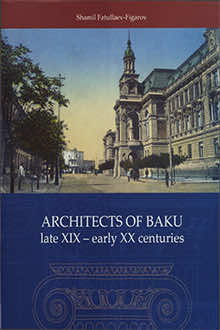Architects of Baku late XIX - early XX centuries [Shamil Fatullayev-Figarov]

Baku is unique not only for its natural and geographical location, historical development starting from the Middle Ages till the early XX century, unique not only as a city on the territory of which artistic cultures of the East and West come across, but it is unique as an architectural phenomenon. Owing to the architectural traditions, high construction culture, and joint creativity of the folk and professional architects, there was formed a peculiar artistic system. In general, such synthesis gave magnificent buildings of different content, volume solution and silhouette. They are not just buildings of different stylistic characteristics of various architectural trend and shades, included into the town-planning structure of city mahalla (blocks) with narrow streets on difficult terrain of Icherisheher, but a single and comprehended interpretation of volume masses in individual architectural expression. Almost each building in a total architectural and planning structure of historic city occupies an active artistic position, and in general, they form appearance which determines the importance of Icherisheher as an architectural phenomenon.
Baku is built in a single architectural-planning gasp during 25 years, from 1880 to 1914, All historic blocks, main motorways of the city have been formed around the ancient city of Icherisheher. A number of architects, including Gasim bey Hajibababeyov, Gafar Izmailov, Ziverbey Ahmadbeyov, E.I.Skibinsky, I.V.Goslavsky, A.S.Kandinov, A.Koshinsky, F.Lemkul, LPloshko, N.P.Tverdokhleb, K.B.Skurevich, N,A. Fon der Nonne, P.Stern, I.Edel, A.Eichler and others have created architectural palette owing to local customers and oil-tycoons, such as H. Z.Taghiev, Musa Naghiev, Shamsi Asadullaev (he was called the king of oil and kerosene), Isa be Hadjinsky, Teymur bey Ashurbeyov and many others. Joint tandem of customers and architects has brought to life 850 monuments of architecture in the historic blocks of Baku.
